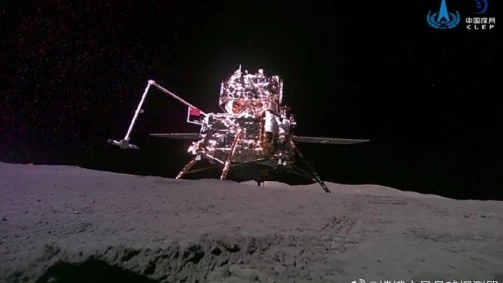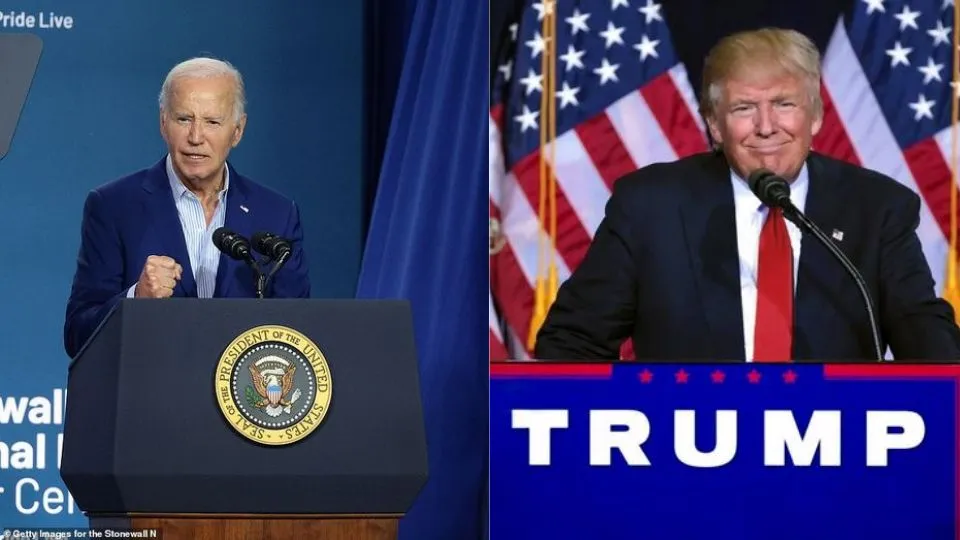On Tuesday, China’s Chang’e- 6 lunar module returned to Earth. The historic mission collected the first-ever samples from the far side of the moon, which is a major boost for the country’s ambitious space program.
The “reentry capsule” containing the precious load, was parachuted onto the fixed zone in China’s northern Inner Mongolia region, while a live telecast carried by CCTV showed the module touching down. The return of the lunar material wraps up a largely successful mission for the China National Space Administration( CNSA) amid a surge of interest in which space agencies and private companies will make instruments and bases on the moon and exploit its resources.
Also Read | Sharmin Sehgal Defends Herself: “I Respect Aditi Rao Hydari; It’s Unfair To Label Me Rude”
Chang’e – 6 collects rock and soil from moon
The Chang’e- 6 mission is named after the Chinese moon goddess, launched from the Hainan area in south China on 3 May and landed on 2 June on the side of the moon that’s unnoticeable from Earth. The moon shows only one face to the Earth because it’s tidally locked and completes one full spin at the moment it takes to encircle the Earth.
The mission’s lander took two days to collect rock and soil from one of the oldest and largest craters on the moon which is 1,600-mile-wide in the South Pole- Aitken( SPA) receptacle. The sample was collected using a robotic arm and drill. Its ascent module also lifted off from the moon’s exterior and came together with the orbiter before embarking on its trip home.
President congratulates CNSA
Chinese President Xi Jinping wrote a congratulatory message “Another milestone achievement in building a strong country in space, and science and technology. ”
Beijing has further plans to dispatch astronauts to the moon by 2030 and to make an exploration base at the lunar south pole, a region believed to contain ice and water, also where the US hopes to establish a base.
Treasure from the far side
The far south side of the moon has been a point of attraction for scientists since they first gazed at it in coarse black and white images, captured by the Soviet Union’s Luna 3 spacecraft in 1959, realizing how different it is from the side facing Earth.
Decades after, and some five years since the Chang’e- 4 mission made China the first and only country to complete a soft wharfing on the far side, scientists from China and around the world have high expedients for the information that can be picked from the samples.
Also Read | Zaheer Iqbal Poses With His To-Be Father-In-Law Ahead Of Marriage With Sonakshi Sinha
Race to the Moon
Chang’e- 6 the sixth of eight listed operations in the Chang’e series is extensively seen as an important step forward for China’s end to put astronauts on the moon in the coming years.
China’s intentions to dispatch astronauts to the moon come as the US targets launching a crewed “ Artemis ” mission as early as 2026 in what would be America’s first similar attempt in further than 50 years. China and the US aren’t alone in eyeing the public prestige, implicit scientific benefits, access to coffers, and farther deep space disquisition that successful moon operations could bring.
India’s moon mission
In 2023, India successfully completed its Chandrayaan 3 mission where its Vikram lander landed near to south pole of the moon and by this, India became first to land in this zone. PM Modi named this landing site as Shiv Shakti point.
Japan, the fifth country to land a spacecraft on the moon, though its Moon Sniper lander faced power issues due to an incorrect wharf angle. The following month, IM- 1, a NASA- funded mission designed by Texas- based private establishment Intuitive Machines, touched down near to the lunar south pole.
Chang’e – 7 mission in 2026
China is expected to launch its Chang’e – 7 mission to the lunar south pole region in 2026, while Chang’e- 8 will be launched in 2028 to carry out tests aimed at utilization of lunar resources in preparation for the lunar exploration station, Chinese space authorities said earlier this year.
About the Author
Simran Akhouri is a postgraduate student in journalism from the University of Delhi. She has developed strong writing skills that allow her to convey stories. She is passionate about uncovering the truth and delivering it to the public in an engaging and accessible manner.











